
TL;DR:
- Saddle and tires deliver instant comfort and speed improvements—these contact points matter most for daily riding
- Crankset upgrades give you noticeable stiffness in sprints and climbs, but only after your contact points are dialed
- Total investment: $200-800 depending on how deep you want to go—way less than wheels or a frame swap
Let’s be honest. Stock parts kind of suck. Most new fixed-gear and single-speed bikes come with pretty shabby everything. And whats worse—most riders blow their upgrade budget on Instagram-worthy wheels while riding on a saddle that feels like a park bench 💀.
I’ve watched people drop $800 on carbon rims before swapping the stock garbage they’re sitting on for 40 miles a week. That’s backwards.
The parts you touch and interact with every single pedal stroke matter way more than the parts you look at. Your saddle, tires, and cockpit will transform your ride quality overnight. That fancy wheelset?
You’ll notice it, sure—but only after you’re actually comfortable on the bike. If you’re still riding stock components on your fixed gear bike, you’re leaving performance (and comfort) on the table ⚡.
This list ranks five specific upgrades by real-world impact—the stuff you’ll actually feel. Not what looks cool on the ‘gram 📸.
A video titled “Top 9 Budget Fixed Gear Upgrades for $20 or Less” from the Zach Gallardo YouTube channel.
Why Stock Parts Actually Hurt Your Ride
If your bike cost under $700, you’re riding components that manufacturers chose based on price, not performance 💸.
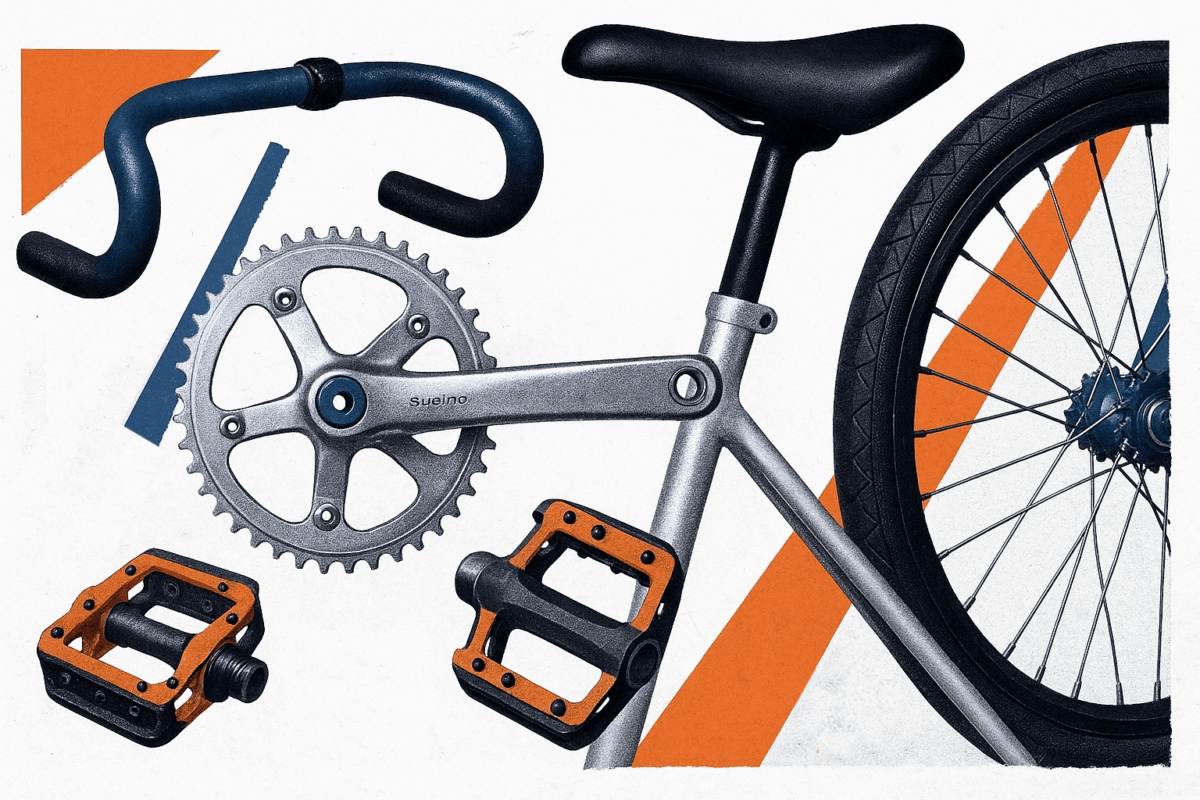
Those stock parts create real problems: uneven wear patterns that kill your expensive parts faster, reduced power transfer (you’re literally wasting watts), and safety issues like brake pads that scratch your rims or pedals that work loose.
Low-quality components don’t just feel worse—they cost you more long-term 🔥. A $15 chain that stretches in 800 miles destroys your $60 cog. Cheap brake pads trap metal shards that sandpaper your rims down to nothing. That’s money you’re burning.
1. Saddle: Stop Squirming on Every Ride
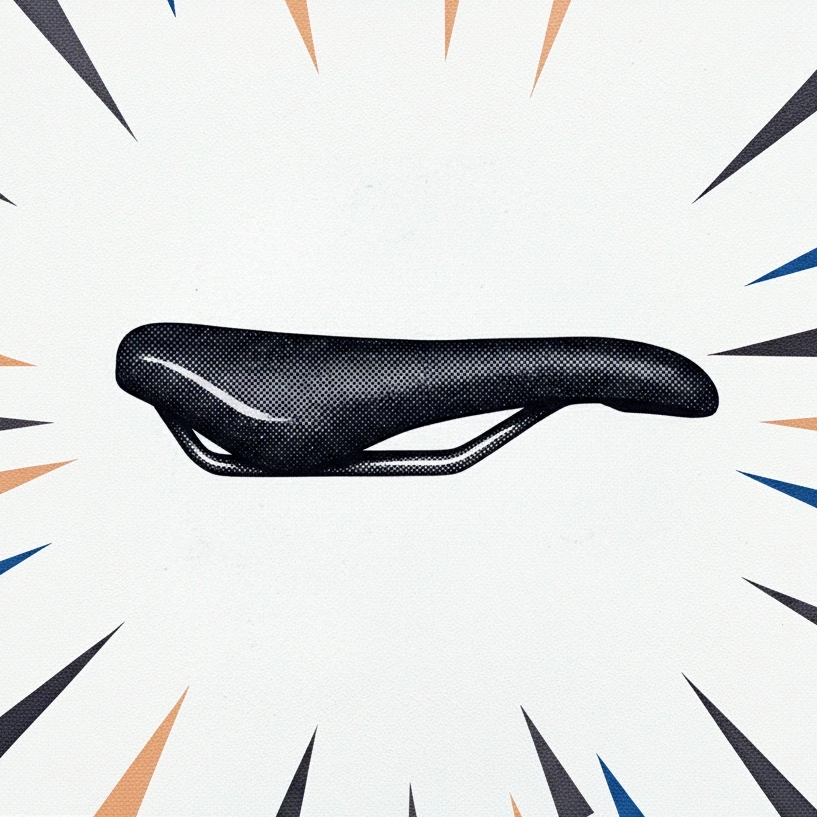
Your saddle is literally the foundation of every ride. If you’re shifting around trying to find a comfortable spot, or your sit bones are screaming after 20 minutes, nothing else matters. Stock saddles are universally terrible—cheap foam that compresses into a plank, flexy rails, covering that tears apart in six months.
I don’t care how good your frame is. A bad saddle will ruin it.
What you’ll notice immediately: No more hunting for the “sweet spot.” Proper sit bone support. Actually being able to ride for more than an hour without your ass going numb.
Top Saddle Options by Budget:
| Saddle | Price | Weight | Best For |
|---|---|---|---|
| Fabric Scoop Shallow Elite | $60-80 | 266g | All-around street riding, forward lean |
| Fizik Aliante R3 | $150 | 220-226g | Long rides, more upright position |
| Brooks C17 Cambium | $130-140 | 464g | Commuters, weatherproof, no break-in |
The Fabric Scoop is the best bang-for-buck option here. Three different profiles mean you can match it to your riding position—Shallow works for most street riders who lean forward a bit. The vacuum-bonded microfiber cover sheds water and stays put, unlike those cheap saddles with staples that pop out.
At $60-80 for the Elite version with chromoly rails, this is stupid affordable for the upgrade you’re getting.

Saddle Width Matters
Most men ride 143-145mm width saddles. Too narrow and you’re sitting on soft tissue instead of sit bones. Too wide and you’ll get thigh chafing. Measure your sit bones or try before you buy.
But if you’re doing serious miles and want endurance comfort, the Fizik Aliante R3 is worth the extra $70-90. That waved profile and double-density foam (firmer where your sit bones land, softer at the nose) makes 50+ mile rides way more tolerable. The newer version has a bigger cutout for pressure relief too.

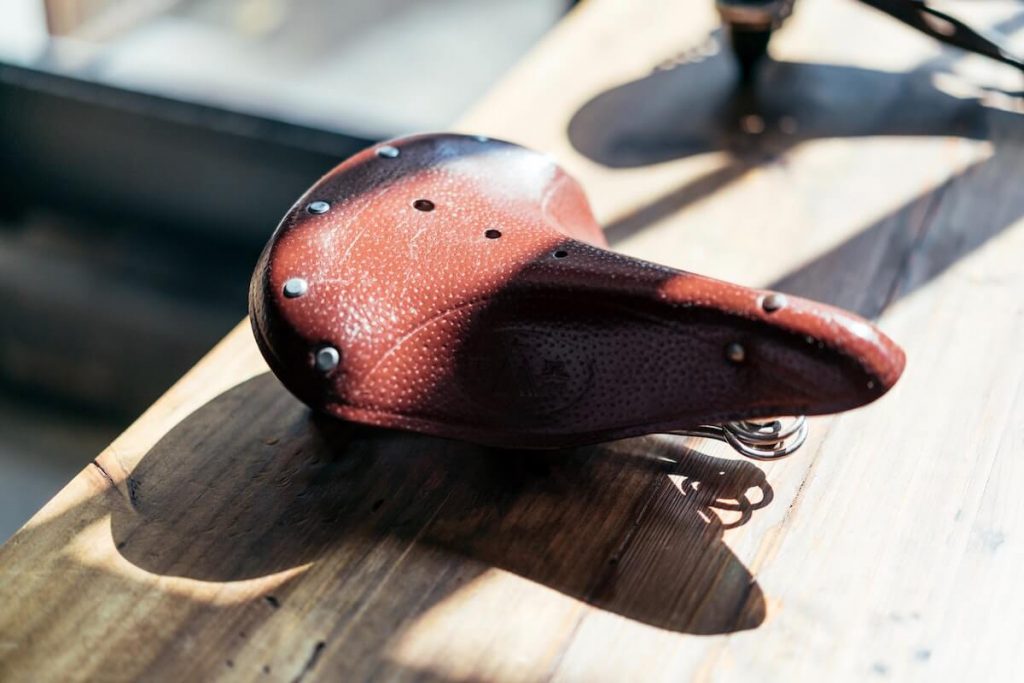
The Brooks C17 is the oddball here—heavy as hell at 464g, but it’s bombproof and needs zero break-in. That vulcanized rubber top flexes with you instead of against you. Perfect if you commute in all weather or just hate the idea of “breaking in” a leather saddle for six months.

The $700 Rule
If your complete bike cost under $700, assume every component is bottom-tier. Manufacturers hit price points by cutting corners everywhere. Your saddle has foam that compresses flat in months. Your chain stretches fast. Your brake pads destroy your rims. Budget $200-300 minimum for foundational upgrades or you’re just maintaining garbage.
2. Tires: The Upgrade That Actually Makes You Faster

This is the most underrated upgrade on the entire list. Tires are your only connection to the road. They control your speed, grip, comfort, flat resistance—everything. And most stock tires are hot garbage: heavy, harsh-riding, puncture-prone pieces of rubber that slow you down and beat you up.
Swap to quality tires and you’ll immediately feel the difference. Smoother ride. Better cornering. Less vibration. And yeah, you’ll be faster too.
Continental GP5000 is the gold standard for good reason. The BlackChili compound grips like crazy in wet or dry conditions, and that Vectran Breaker puncture layer provides solid protection—riders commonly report 4000-6000 miles before needing replacement.
At $60-80 per tire for the clincher version, they’re pricey but worth every penny.
Here’s what you’re getting: 12% better rolling resistance than the previous GP4000, and grip that’s there from day one (no break-in needed). The 330 TPI casing feels supple but doesn’t sacrifice durability.
Note that while Continental claims 20% more puncture protection, independent testing shows mixed results with some tests indicating slightly lower puncture resistance than the GP4000.
Width matters for fixed gear. Most riders should run 25c or 28c for street use. The 23c “racing” width is harsh as hell on city roads—you’ll feel every crack and pothole. Go 28c if your frame clears it. The extra 3mm of air volume smooths out rough pavement without making you sluggish.

Fun Fact
Continental’s Active Comfort Technology isn’t marketing BS. There’s an elastomer layer embedded in the casing that dampens vibration without adding significant weight.
If you’re on a tighter budget, the Panaracer Gravel King in slick (around $40-50 per tire) gives you great puncture protection and ride quality for less money. Not quite as fast-rolling as the GP5000, but close enough that most riders won’t notice.
Upgrade your tires before you upgrade anything else. The difference between stock rubber and quality tires is bigger than most $500 wheelset upgrades.
3. Crankset: When Stiffness Actually Matters
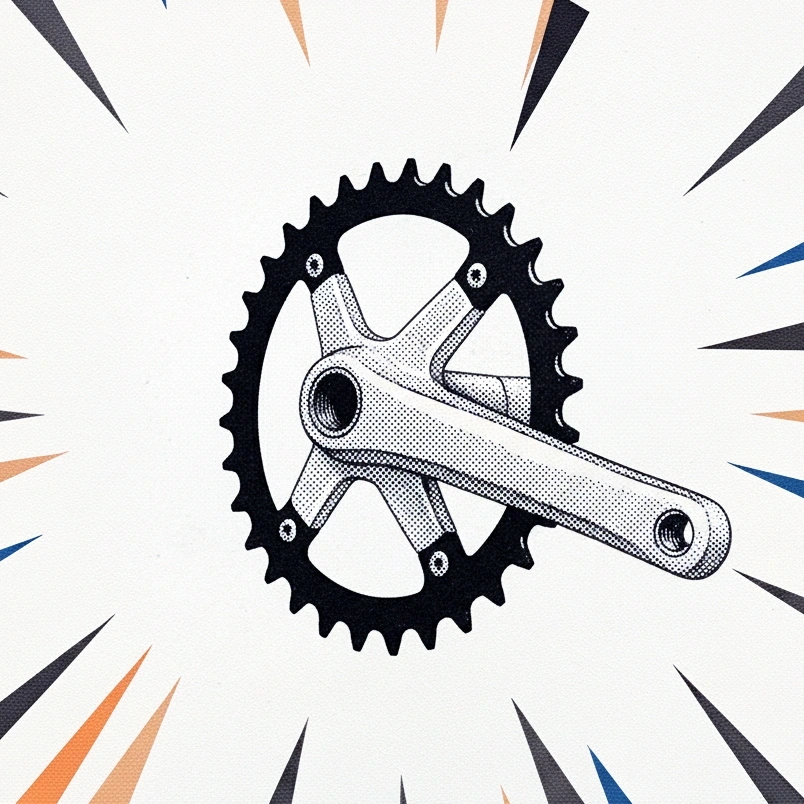
Cranksets are where you’ll hear the most hype versus reality disconnect. Yes, a stiff crankset makes a difference. No, it’s not the first thing you should upgrade (unless your stock cranks are literally flexing under load, which… yikes).
But once your saddle and tires are sorted? A proper crankset transforms how your bike responds when you’re putting down power. No more noodle-armed flex when you sprint or climb out of the saddle. Every watt you put into the pedals goes straight to the rear wheel.
The Big Three Options:
Sugino 75 ($355-430 complete): The track legend. NJS certified (silver version), cold-forged aluminum that’s machined to stupid-tight tolerances. At 680g complete with bottom bracket and chainring, it’s not the lightest, but the stiffness is unmatched.
That 144 BCD means you’re locked into track chainrings, which is fine—you probably want a 47t, 48t, or 49t anyway.
I’ve seen Sugino 75s on bikes that have logged 20,000+ miles and they still run perfect. The square taper interface is so precise that you’ll never have issues with the crank loosening or creaking. Worth the money? If you’re keeping the bike long-term, absolutely.
SRAM Omnium ($256 with GXP BB): Discontinued in 2020 but still available from select retailers with new old stock. These were the fixed gear crankset for years—7050-T6 alloy, external bearing GXP system, 48t chainring. Crazy stiff, butter-smooth pedal stroke.
The catch? They’re gone from SRAM’s lineup. State Bicycle and a few others still have stock, but when those run out, you’re buying used.
If you can snag a set, do it. The Omnium delivers flagship performance at a mid-tier price.
Budget Option – FSA or Andel ($100-170): If the Sugino price makes you wince, FSA Track cranks or Andel Standard cranks get you 80% of the way there for half the cost. Cold forged aluminum, decent stiffness, 144 BCD compatibility.
They’re not NJS certified and you’ll notice a bit more flex under serious power, but for street riding they’re perfectly adequate.
“The Omnium crankset is worth every penny… stiffest for track/fixed… power transfer through the entire pedal stroke.” — State Bicycle customer review
Don’t cheap out on the bottom bracket if you’re upgrading cranks. A quality BB (sealed cartridge or external bearing) is non-negotiable—it’ll outlast three cheap ones.
4. Handlebars & Stem: The Fit You’re Missing

This is where most riders get it wrong. They either ignore their cockpit entirely or they swap bars/stem purely for aesthetics without considering fit. Your bars and stem directly affect your comfort, control, and riding position. Get this wrong and you’ll have numb hands, sore shoulders, and sketchy handling.
Bar width should match your shoulder width. Too narrow and you’re cramped and unstable. Too wide and you’re overreaching. For most riders, that’s 40-44cm center-to-center. Track bars tend to run narrower (38-40cm) than road bars for better aerodynamics and maneuverability.
Nitto B123AA ($125-145) is the classic track bar for good reason. Hand-built in Japan, aluminum alloy, available in 37cm, 40cm, and 42cm widths. The shallow drop and comfortable reach make them perfect for fixed gear street riding.
They’re overbuilt compared to lightweight road bars, which means they won’t flex or crack even if you’re hammering.
Cinelli Pista ($84) gives you similar geometry for less money. Not quite as refined as the Nitto, but damn good for the price.
For stems, Thomson Elite X2 ($122) is the gold standard. CNC machined from a single block of 7000-series aluminum in Georgia. Two-bolt faceplate, 10° or 17° angle options, available from 70mm to 130mm lengths.
At 147g for the 100mm version, it’s light without being fragile. The interlocking handlebar clamp design is as stiff as four-bolt stems while being narrower and cleaner-looking.
Do:
- Measure your current reach and stack before buying
- Consider shorter stem lengths (90-100mm) for quicker handling
- Test different bar widths if possible
Don’t:
- Buy bars based purely on aesthetics
- Go too narrow (less than 38cm) unless you’re racing track
- Ignore the angle of your stem—10° vs 17° changes your position significantly
Stem length directly impacts handling. Shorter (70-90mm) = quicker steering response but twitchier. Longer (110-130mm) = more stable but slower to react. For aggressive street riding, 90-100mm is the sweet spot for most riders.
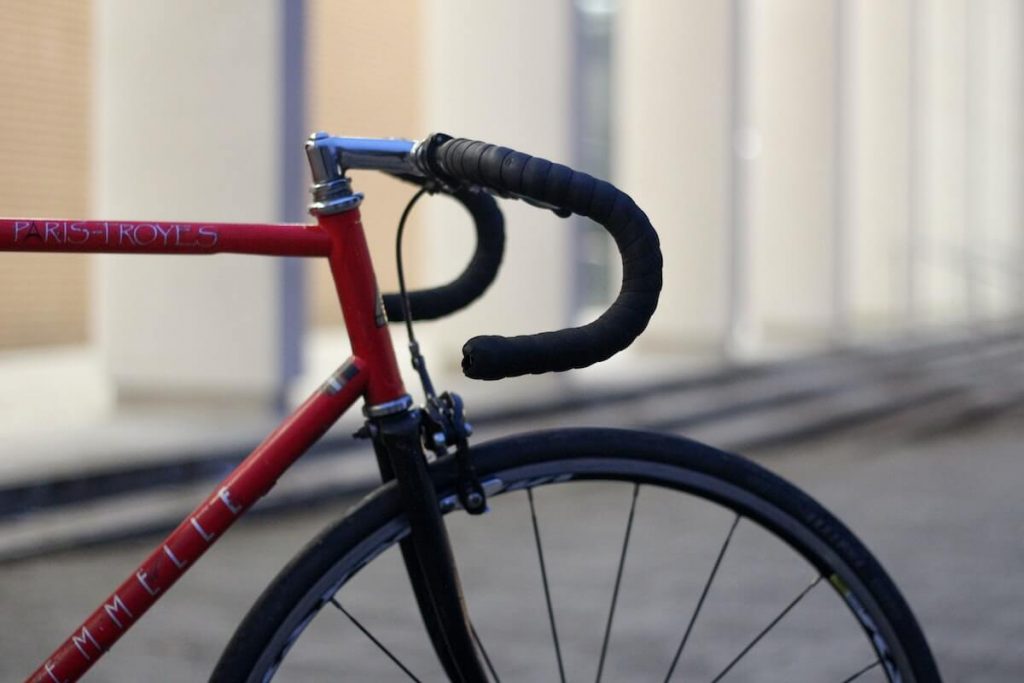
5. Chain: The Quiet Upgrade You’ll Love
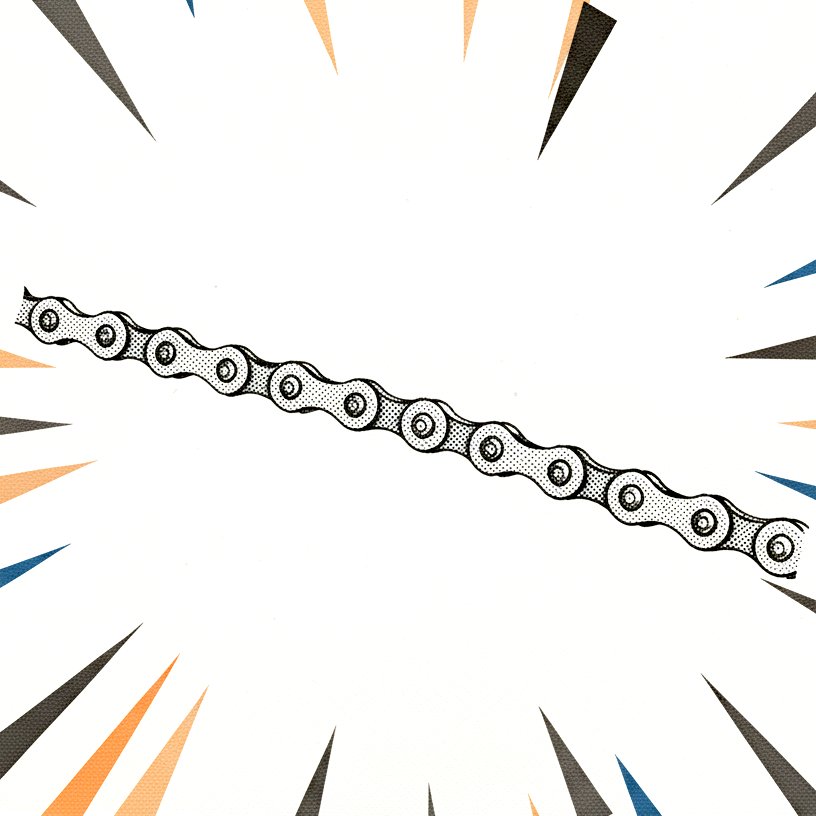
Chains are boring. Nobody posts their chain on Instagram. But a premium chain is one of those upgrades you notice every single ride—it’s just quieter, smoother, and lasts way longer than the cheap stuff.
Stock chains stretch out fast, especially if you’re riding brakeless and skidding. They get noisy. They wear your cog and chainring prematurely. And when they finally snap mid-skid? Yeah, that’s not fun.
Izumi Super Toughness ($85) is the premium pick. High-carbon alloy pins, made in Japan. According to Izumi, the special high-carbon alloy used in the pins offers a 300% increase in durability compared to their standard 401 chain. Riders report 6000+ miles before replacement. The catch? It’s loud. Like, really loud.
The “Super Loudness” nickname is earned. But that noise means durability—the roller construction that makes it tough also makes it chattery.
If you’re riding brakeless or skidding frequently, this is the chain you want. It won’t snap on you.
KMC K1SL Wide ($30-40) is the budget king. Still a quality 1/8″ track chain with mushroomed pins and anti-drop features, but you’ll replace it 2-3 times before an Izumi needs swapping. For casual riders who aren’t putting down serious power, this is plenty.
HKK Vertex NJS ($60-70) splits the difference. NJS certified, roller construction, available in cool colors if that matters to you. Not quite as bombproof as the Izumi, but close. Better value if you’re doing moderate miles.

Chain/Cog Compatibility Warning
Don’t mix brands randomly. Izumi chains work best with Dura-Ace or other high-quality cogs. Cheap chains on expensive cogs (or vice versa) can cause noise and premature wear. Match quality levels.
Here’s the truth: most riders should start with a KMC and upgrade to Izumi later. Unless you’re logging serious miles or riding brakeless, the extra $50 for the Super Toughness is overkill.
Keep it lubed, keep it clean, and even a budget chain will treat you well.
6. Honorable Mentions: When These Matter
Pedals & Retention
Here’s a story: I once watched a rider lose his pedals mid-descent on a steep hill. He hit the pavement hard enough that I still think about it years later. Stock pedals aren’t just uncomfortable—they can be dangerous.
Quality pedals with proper retention (toe clips, straps, or clipless) transform your connection to the bike. You’re not just pushing down anymore; you’re pulling up on the backstroke, which means more power and better control. MKS Sylvan pedals ($90-110) or MKS Lambda ($50-60) are bombproof options that’ll outlast your bike.
For retention, Hold Fast straps ($25) or Fyxation Gates ($35) give you solid foot security without committing to clipless. If you’re skidding or riding brakeless, retention isn’t optional—it’s mandatory.
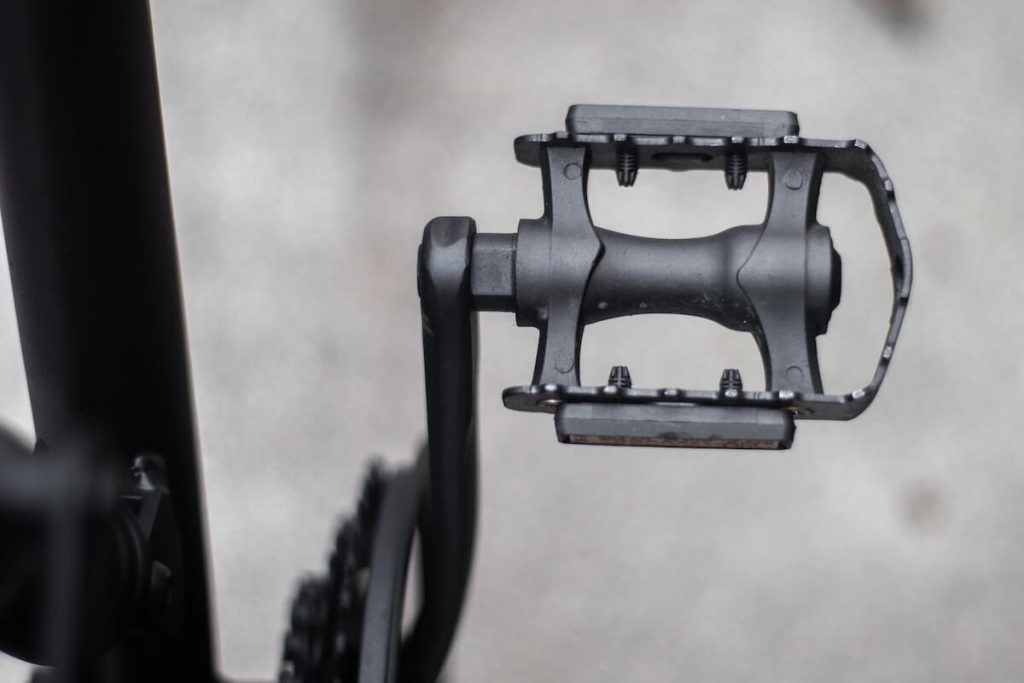
Brakes (If You Run Them)
Even if you can stop using leg power alone, a front brake is required by law in most states—and it’s a smart safety backup. The problem? Stock brakes often have flexy, under-powered calipers with pads that trap road debris.
That debris gets embedded in cheap pads and slowly grinds your rim’s braking surface away. If you’ve got anodized or painted rims, those shards will strip the finish in months. Quality brake pads (Kool-Stop Salmon, $15-20) are softer, grip better in wet conditions, and don’t destroy your rims.
For calipers, SRAM Rival 22 ($130-150 per brake) are overkill but fantastic—stiff, powerful, easy to adjust. Tektro R559 ($40-50) gets you 80% of the performance for a third of the price.

When Wheels Actually Matter
I said earlier to skip wheels initially, and I meant it. But there’s a point where they make sense: after you’ve dialed in everything else and you’re chasing marginal gains, or your stock wheels are genuinely terrible (if your wheels weigh over 2500g for the pair, they’re boat anchors).
Deep-section wheels like Velocity Deep-Vs look incredible and add noticeable stiffness, but they catch crosswinds like a sail. For street riding, a quality mid-depth wheelset (H Plus Son Archetype laced to Formula hubs, around $300-400) balances looks, durability, and performance.
Just know: wheels are expensive and the performance gain is subtle compared to tires. Most riders dramatically overestimate how much faster new wheels make them. A $400 wheelset might save you 30 seconds on a 20-mile ride. Better tires save you 2 minutes and feel smoother doing it.
Budget Priority Ranking: Maximize Your Money
If you’ve got limited cash, here’s exactly how to sequence your upgrades for maximum impact per dollar:
Under $150 Budget:
- Quality tires ($80-100 for both)
- KMC K1SL chain ($35)
- Kool-Stop brake pads if running brakes ($18)
$150-400 Budget:
- Fabric Scoop saddle ($70)
- Continental GP5000 tires ($140)
- Quality pedals with straps ($80-100)
- KMC chain ($35)
$400-800 Budget:
- Fizik saddle ($150)
- Continental tires ($140)
- Sugino 75 or SRAM Omnium crankset ($250-400)
- Izumi chain ($85)
- MKS pedals + straps ($115)
Over $800:
Now you can consider cockpit upgrades (bars/stem) and wheelsets—but only after everything above is sorted.
The key: resist the Instagram-worthy expensive stuff until your contact points are dialed. A $150 saddle + $140 in tires transforms your ride more than a $600 wheelset ever will.
Frequently asked questions (FAQ)
No. Unless your stock wheels are literally broken or ridiculously heavy (like, 2500g+ heavy), focus on contact points first. Wheels are expensive and the performance gain is overstated for most riders. A $400 wheelset won’t make you faster if you’re uncomfortable on a garbage saddle or riding sketchy tires.
Mix away—except chains and cogs, where brand compatibility matters for wear patterns. Your Fabric saddle will work great with Thomson stem and Sugino cranks. Bike parts aren’t like Apple products; they don’t need to be from the same ecosystem.
More than you’d think. Standard is 170mm, but 165mm gives you better ground clearance for pedal strikes and slightly higher cadence. Longer arms (175mm+) give you more leverage but can feel sluggish. For fixed gear street riding, stick with 165mm or 170mm.
These are crucial for safety and power transfer, but they’re personal preference (platform vs clipless, strap tension, pedal size). Quality pedals like MKS Sylvan ($90-110) or Lambda ($50-60) are bombproof. For straps, Hold Fast or Fyxation Gates ($25-35) give you solid retention. The horror story version: cheap pedals can work loose under load—I’ve seen riders eat pavement because of it. Don’t cheap out here, but find what works for YOUR foot and riding style.
Absolutely not. Start with saddle and tires ($140-240 total). Ride that for a few months. Then add the crankset. Then cockpit. Then chain. Spreading upgrades out lets you actually feel the difference each part makes—and it’s easier on your wallet.
Mostly yes, with some caveats. Saddles are universal. Tires need to fit your frame clearance (check before buying 28c). Cranksets need compatible bottom brackets. Bars/stems need to match your steerer tube diameter (1″ or 1-1/8″). Chains are universal for 1/8″ drivetrain. Check compatibility before buying—frame specs matter.
If you run a front brake, yes—especially if you have colored or anodized rims. Stock brake pads trap metal debris and road grit that grinds away your rim’s braking surface. Upgrade to quality pads (Kool-Stop Salmon) at minimum. If your brake calipers flex when you squeeze hard, upgrade those too. SRAM Rival or Tektro R559 calipers deliver way better stopping power and modulation.
Final Thoughts
Look, you can spend $2000 on a carbon wheelset or $500 on a fancy frame, but if you’re still riding stock contact points, you’re doing it backwards. These five upgrades—especially the first three—will transform your ride more than any Instagram-worthy parts ever will.
Start with the saddle. Seriously. Spend the $60-150 to stop hating every ride. Then throw on some quality tires. That’s $200-300 total and your bike will feel completely different. The crankset, cockpit, and chain? Those come later, once you’ve got the foundation right.
The best part? Every single one of these upgrades carries forward to your next bike. That Fabric saddle you buy today will still be perfect in five years. Your Continental tires will last you through whatever fixed gear build you move to next. Quality parts are an investment, not an expense.
Which upgrade are you tackling first? Hit me in the comments—I actually read them all.
Sources and references
- Fizik Official Website – Tempo Aliante specifications and pricing
- Fabric Official Website – Scoop saddle lineup and geometry
- Brooks England – C17 Cambium product details
- Continental Tires – GP5000 technical specifications
- Bicycle Rolling Resistance – GP5000 independent lab testing and reviews
- BiketiresDirect – User reviews and pricing for tires and chains
- Retrogression – Fixed gear component pricing and availability
- State Bicycle Co. – SRAM Omnium availability and reviews
- Wabi Cycles – Sugino 75 specifications and compatibility
- Thomson Official – Elite X2 stem technical data
- REI – Continental GP5000 S TR user reviews
- Bike Forums – User discussions on crankset upgrades and chain longevity
- LFGSS (London Fixed Gear Forum) – Chain reviews and recommendations
- Velospace – Fixed gear upgrade priorities and budgeting

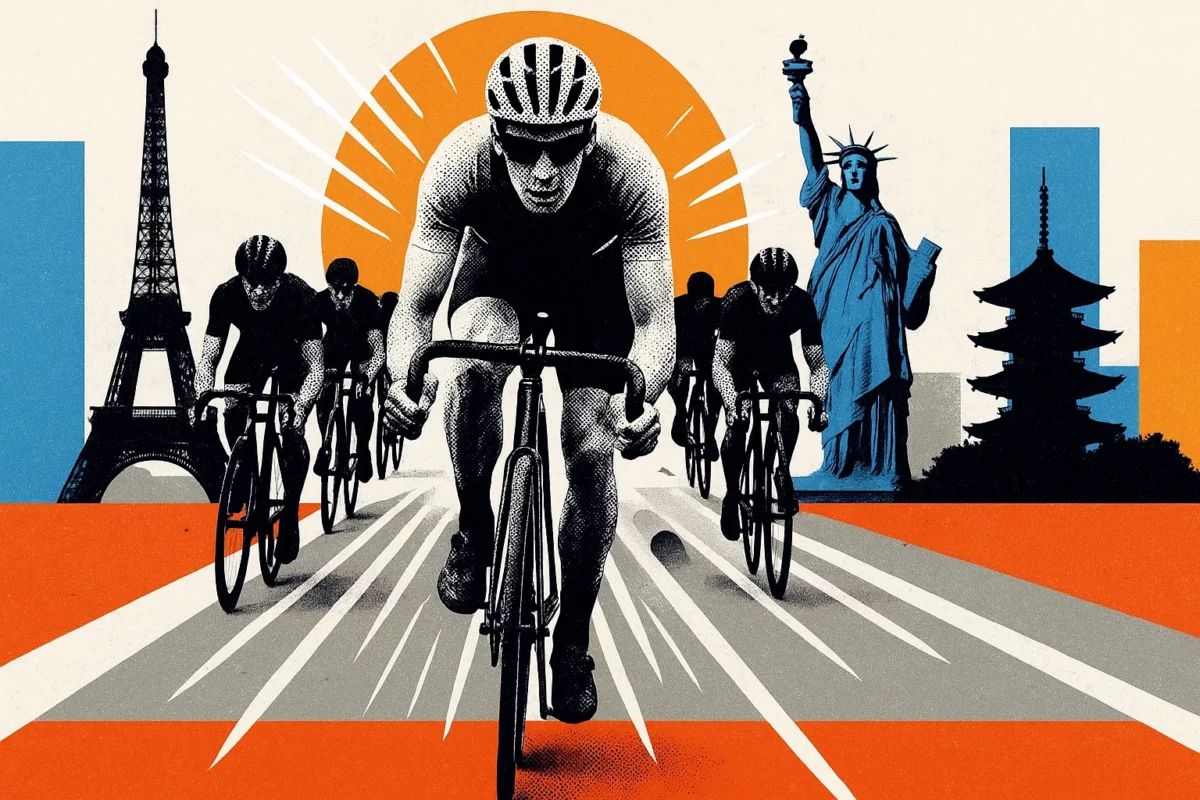
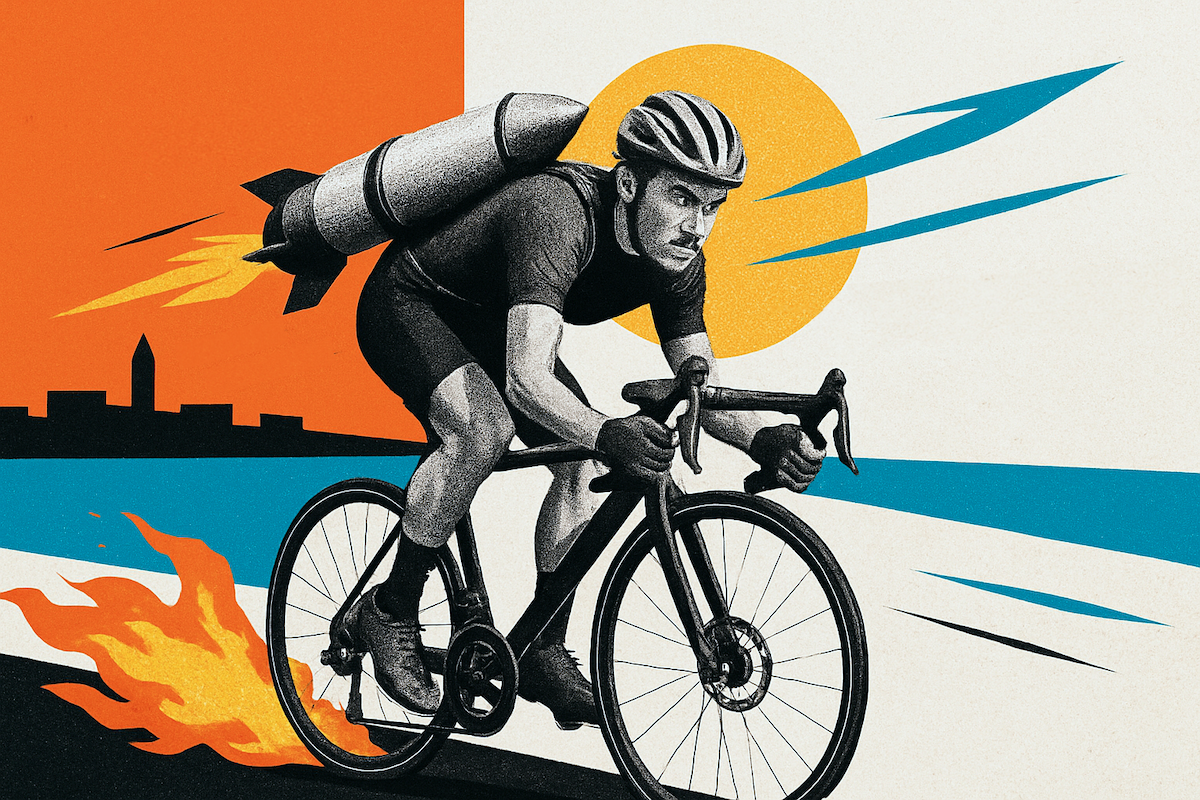


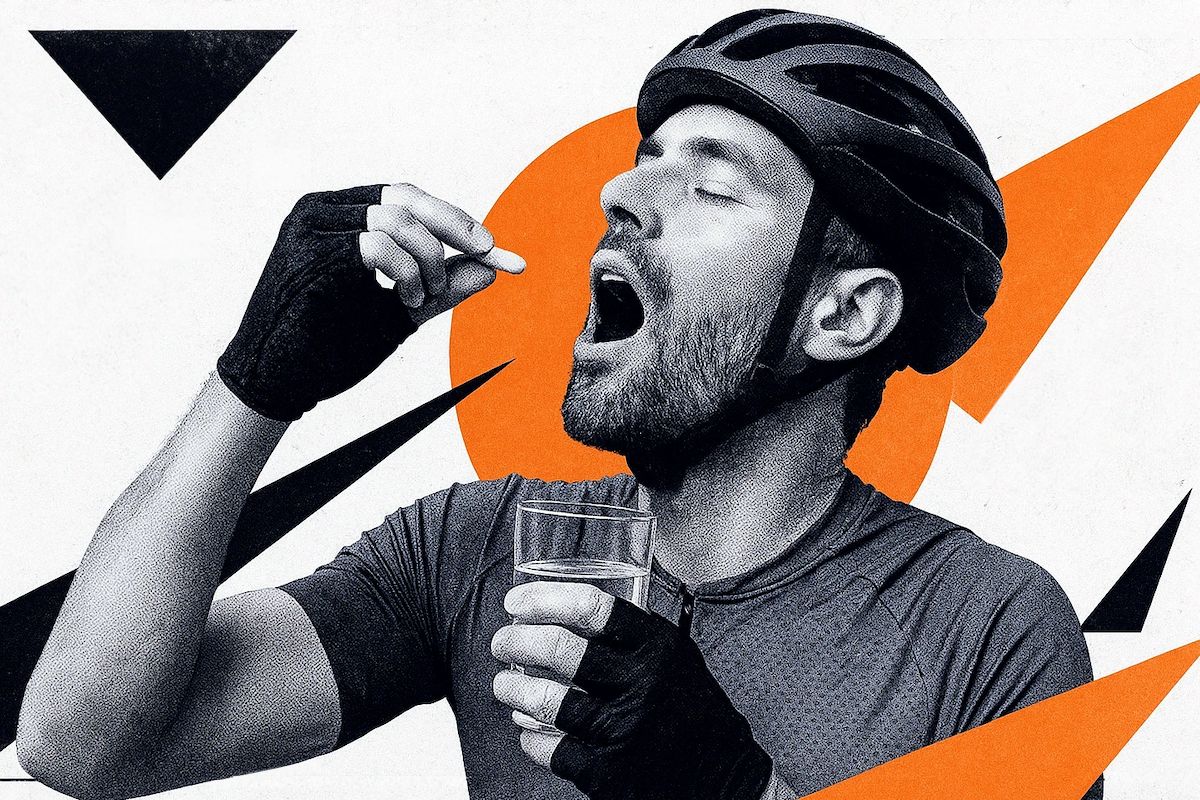

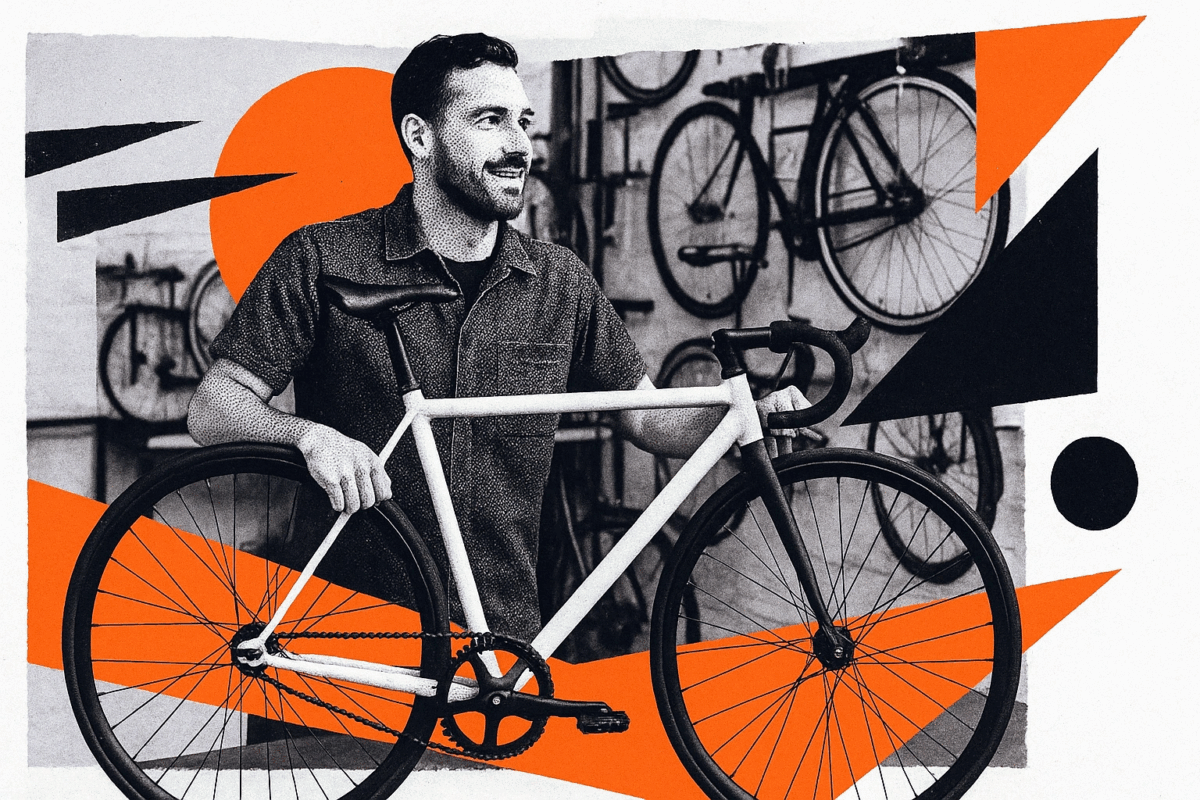
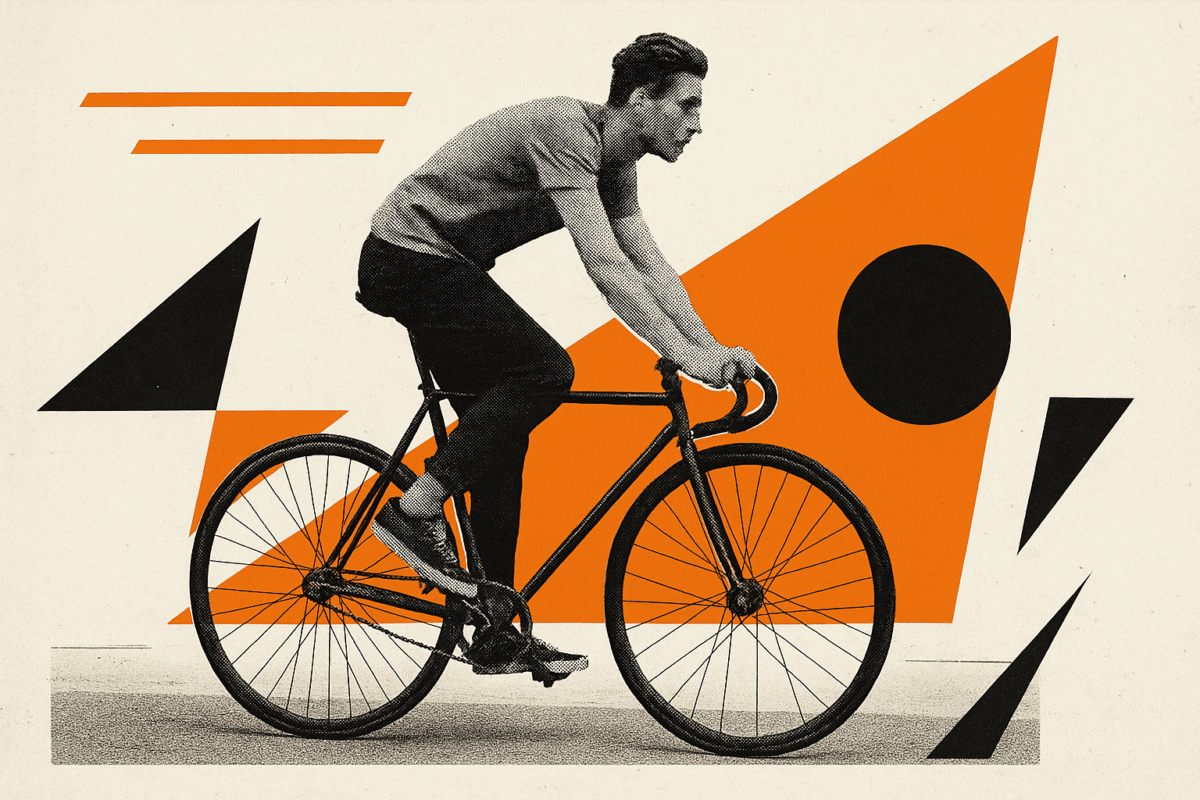
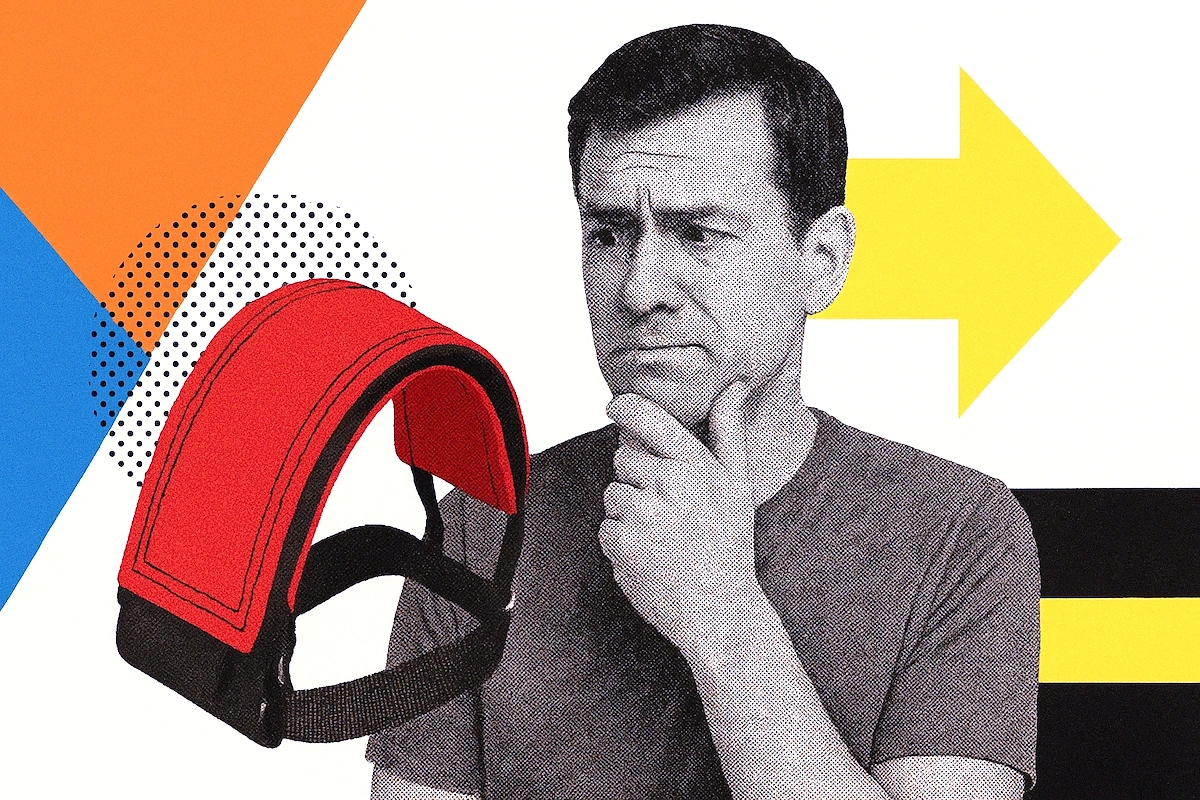
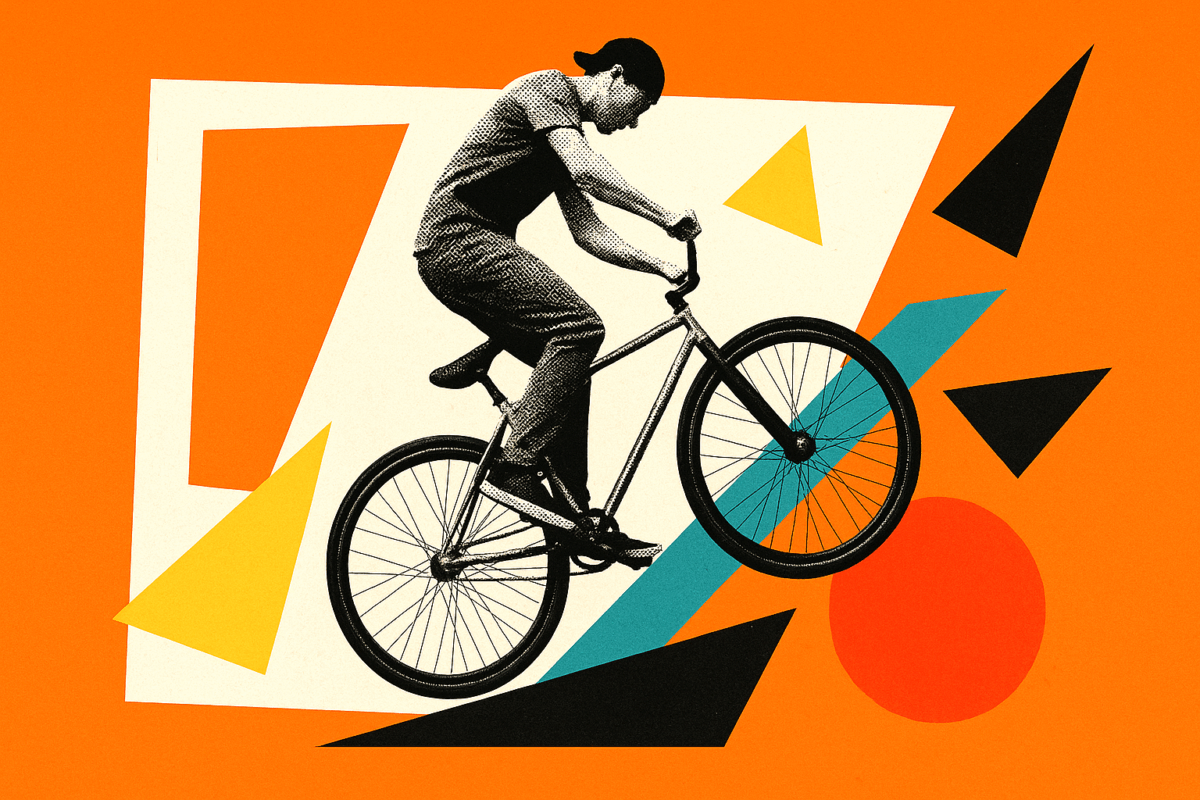













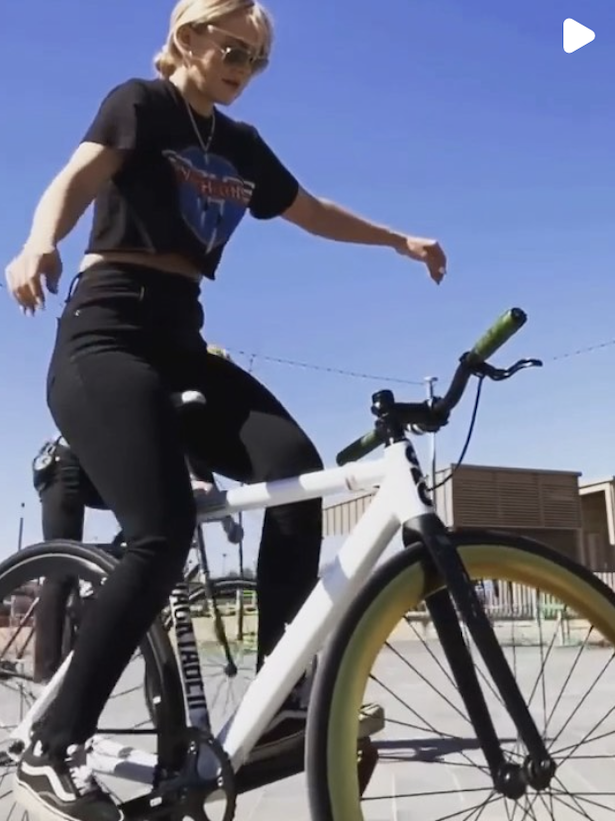

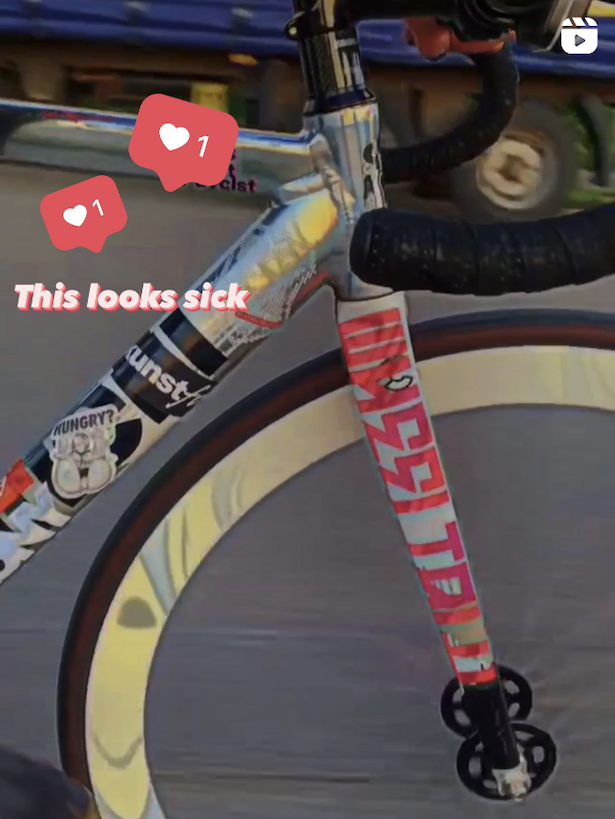
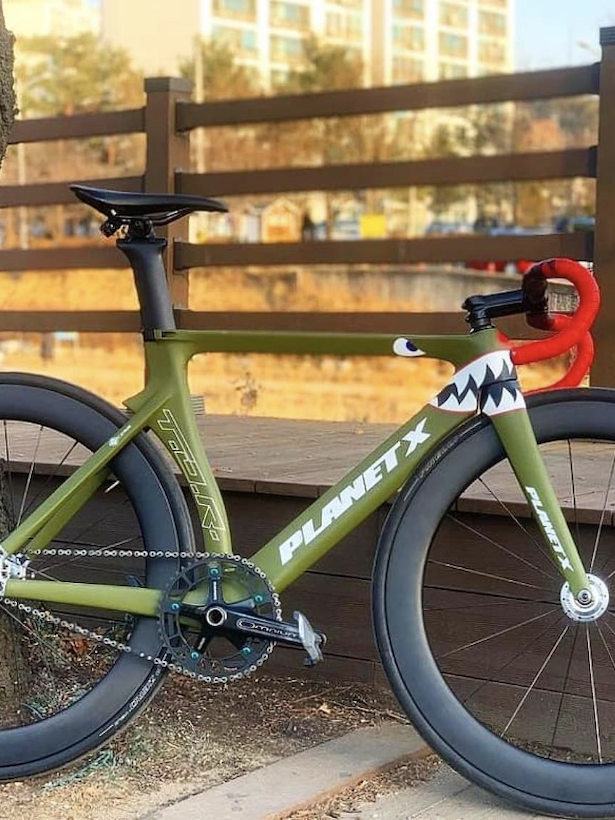
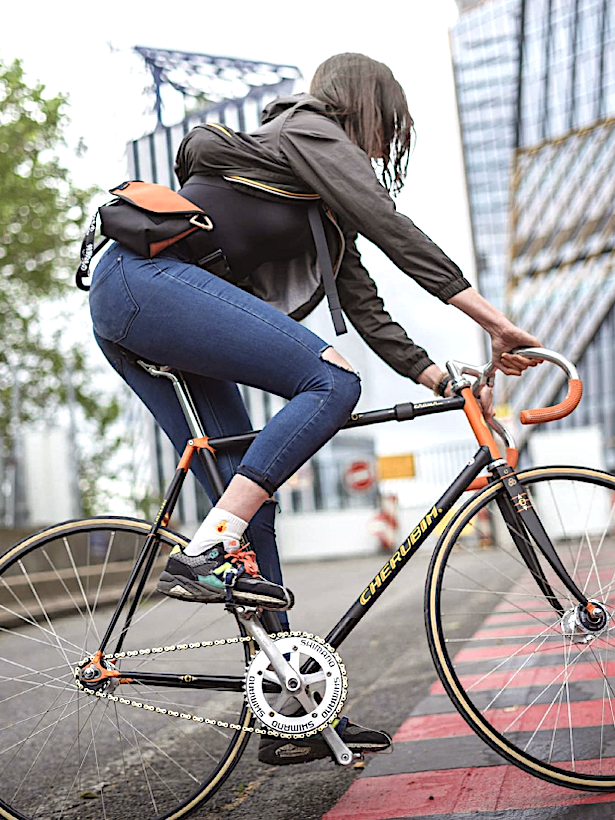
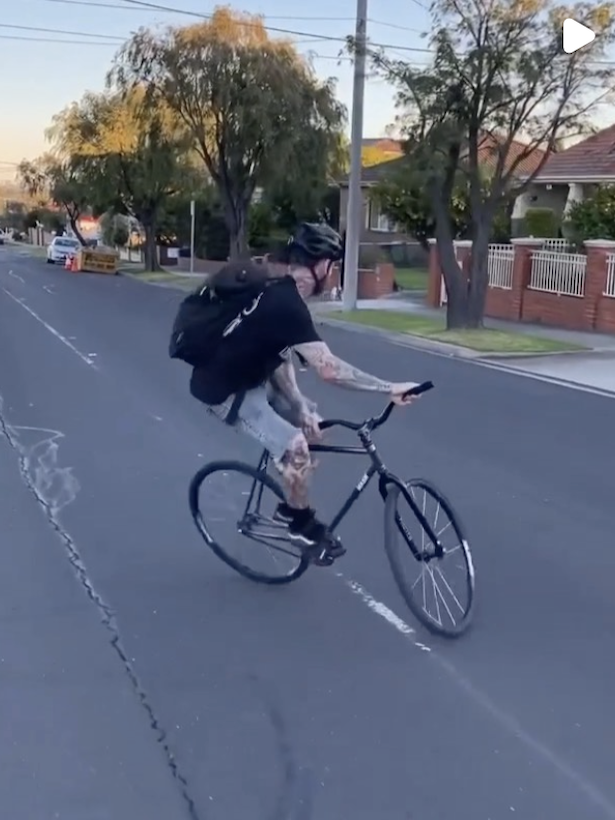
So do you like to upgrade your fixie? Let me know, I read and reply to all comments.